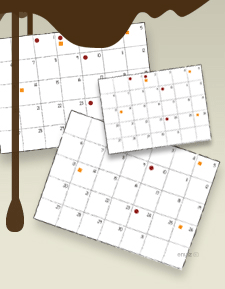
 |
|
|
 |
 |
|
|
| | 1 |
| 2 | 3 | 4 | 5 | 6 | 7 | 8 |
| 9 | 10 | 11 | 12 | 13 | 14 | 15 |
| 16 | 17 | 18 | 19 | 20 | 21 | 22 |
| 23 | 24 | 25 | 26 | 27 | 28 | 29 |
| 30 | 31 | |
|
|
| |
|
 |
 |
|
|
Natural Rubber Production
World natural rubber production is forecast to rise 4.3 percent annually
to 12.5 million metric tons in 2013. Gains will be stronger than for synthetic
rubber materials, but decelerate in comparison to the 2003 to 2008 period.
Favorable natural rubber prices will spur additional planting and more
efficient cultivation (e.g., the use of higher yielding varieties, control of leaf blight,
the utilization of modern cultivation techniques, improved agronomic practices and
the use of chemical yield stimulation) in many of the leading rubber producing
nations. Even after accounting for expected price increases, natural rubber will
continue to offer price advantages over commodity synthetic elastomers, and
demand will also benefit from continued heavy use in tires, and greater use in
blends with various synthetic elastomers, where natural rubber improves
weathering characteristics.
Growing sales of medical rubber products will also aid natural rubber sales.
As has always been the case, natural rubber supply will also hinge on a
number of uncertain factors such as the volatility of international politics and
climatic conditions. In January 2002, Thailand, Malaysia and Indonesia
launched an organization called the International Tripartite Rubber
Organization, which operates via the International Rubber Consortium (IRCo).
The IRCo helps to determine and enforce supply and export management
among these nations, in an effort to maintain a more consistent balance between
production and consumption (and hence price). While the cooperation between
members has been imperfect, the group has helped to reopen dialogue between
the member nations, which had become less common following the collapse of
the International Natural Rubber Organization (INRO) in 1999. In 2007,
Vietnam agreed to join the IRCo, resulting in four of the worlds five leading
natural rubber producers participating in the group (with only India not
involved)
The Asia/Pacific region will continue to account for more than 90 percent
of world natural rubber production in 2013. Output is concentrated in Thailand
and Indonesia, which together produced almost 60 percent of the natural rubber
in the world in 2008. Other important producing nations include Malaysia,
India, Vietnam and China, with smaller but still significant production in the
Philippines and Sri Lanka. Strong production increases are expected in
Indonesia, Malaysia and Vietnam, all of which will benefit from recovery in the
global economy after the weakness of 2008, improved cultivation methods,
attempts to reduce the incidence of disease, and an increase in acreage devoted
to natural rubber. In addition, natural rubber manufacturing in several smaller
producing nations in the region will rise rapidly, particularly in Cambodia and
Laos. In the mid-2000s, the Cambodian government announced plans to
increase the area under rubber cultivation in the country from approximately
65,000 hectares to nearly 125,000 hectares by 2020. In Laos, significant
planting of rubber trees has occurred since 2002 and as this newer acreage
begins to yield rubber, production is expected to rise rapidly.
Unlike many other countries in the region, most natural rubber
production in Indonesia and Malaysia occurs at smallholdings, many of which
are less than two hectares. While smallholders can convert the raw rubber into
sheets at cooperatives, much of the raw rubber is processed in larger factories.
The relatively low yields and lack of processing capabilities prevent many
smallholders from earning enough to invest in better yielding trees or adopt less
labor intensive harvesting methods. These factors limit the ability of much of
the countrys rubber industry from increasing production dramatically, although
some government efforts to improve smallholders practices and invest in better
yielding materials have helped overcome these handicaps.
Outside of the Asia/Pacific region, most natural rubber production occurs
in Africa and Latin America, with a small amount of production in Mexico.
Cote dIvoire and Liberia are the leading producers of natural rubber in Africa,
with smaller natural rubber industries in Cameroon and Nigeria. In Latin
America, leading producing nations are Brazil and Guatemala. Large scale,
commercial cultivation of natural rubber throughout Latin America is limited by
a leaf disease called South American Leaf Blight, which is endemic to the entire
region. This disease has killed many rubber trees and reduced the efficiency of
many of the remaining plants to half the latex produced by an average Asian tree.
While efforts at breeding disease resistant trees are ongoing, the blight is
expected to continue to limit natural rubber production in the region.
Currently, the only commercially important source of natural rubber is
latex cultivated from the Hevea brasiliensis tree. Although many varieties of
plants produce polyisoprene in the form of latex, only this species of Hevea, the
guayule plant and potentially the Taraxacum kok-saghyz plant are capable of
producing the high molecular weight linear polymer with a 100 percent cis
structure typical of natural rubber. The Hevea tree is preferred because it yields
high quality latex over a sustainable period and is amenable to tapping.
Climatic conditions necessary to the production of natural rubber include an
average temperature range of 25 to 30 degrees Celsius and average annual
rainfall of at least 2 meters evenly distributed throughout the year. As of 2008,
approximately 10.5 million hectares (26 million acres) of land were dedicated to
the cultivation of natural rubber.
Credit : //www.rubber-foundation.org
| Create Date : 27 มีนาคม 2557 |
| Last Update : 27 มีนาคม 2557 21:34:37 น. |
|
0 comments
|
| Counter : 3095 Pageviews. |
|
 |
|
|
|
|
|
| Polymerist |
 |
|
|
 |
|




